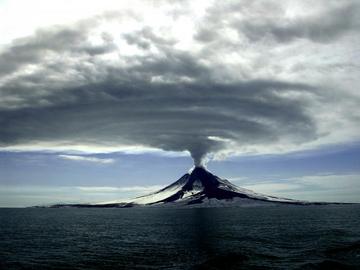Volcanic Ash Modeling

Mt. Augustine volcanic eruption
(Credit: Cyrus Read, U.S. Geological Survey)
Volcanic ash is a hazard to aircraft because it can degrade engine performance and navigational and operational instrumentation. Operationally, the NWS runs the ARL-developed HYSPLIT model to forecast the transport and dispersion of volcanic ash in and near the U.S. Volcanic Ash Advisory Centers’ (VAAC) (Anchorage, AK, and Washington, DC) areas of responsibility.
What We Do
ARL scientists conduct research to improve volcanic ash dispersion forecasts and transfer new or updated dispersion capabilities into operational use at the National Weather Service (NWS). An ARL meteorologist is a member of the Interagency Council for Advancing Meteorological Services (ICAMS) Working Group on Atmospheric Transport, Dispersion and Volcanic Ash. ARL also supports the U.S. representative to the International Civil Aviation Organization (ICAO ) International Airways Volcano Watch Operations Group (IAVWOPSG ).
For More Information:
The READY volcanic ash web page contains links to:
- Current HYSPLIT forecasts issued by NOAA, if any
- HYSPLIT output from hypothetical eruptions, and
- Ability to run HYSPLIT for any volcano using archived analysis or current forecast meteorology
- HYSPLIT trajectory forecasts for Alaskan volcanoes
More information on the history of the volcanic ash program at ARL and an explanation of the volcanic ash model products is available on the HYSPLIT Volcanic Ash pages.

